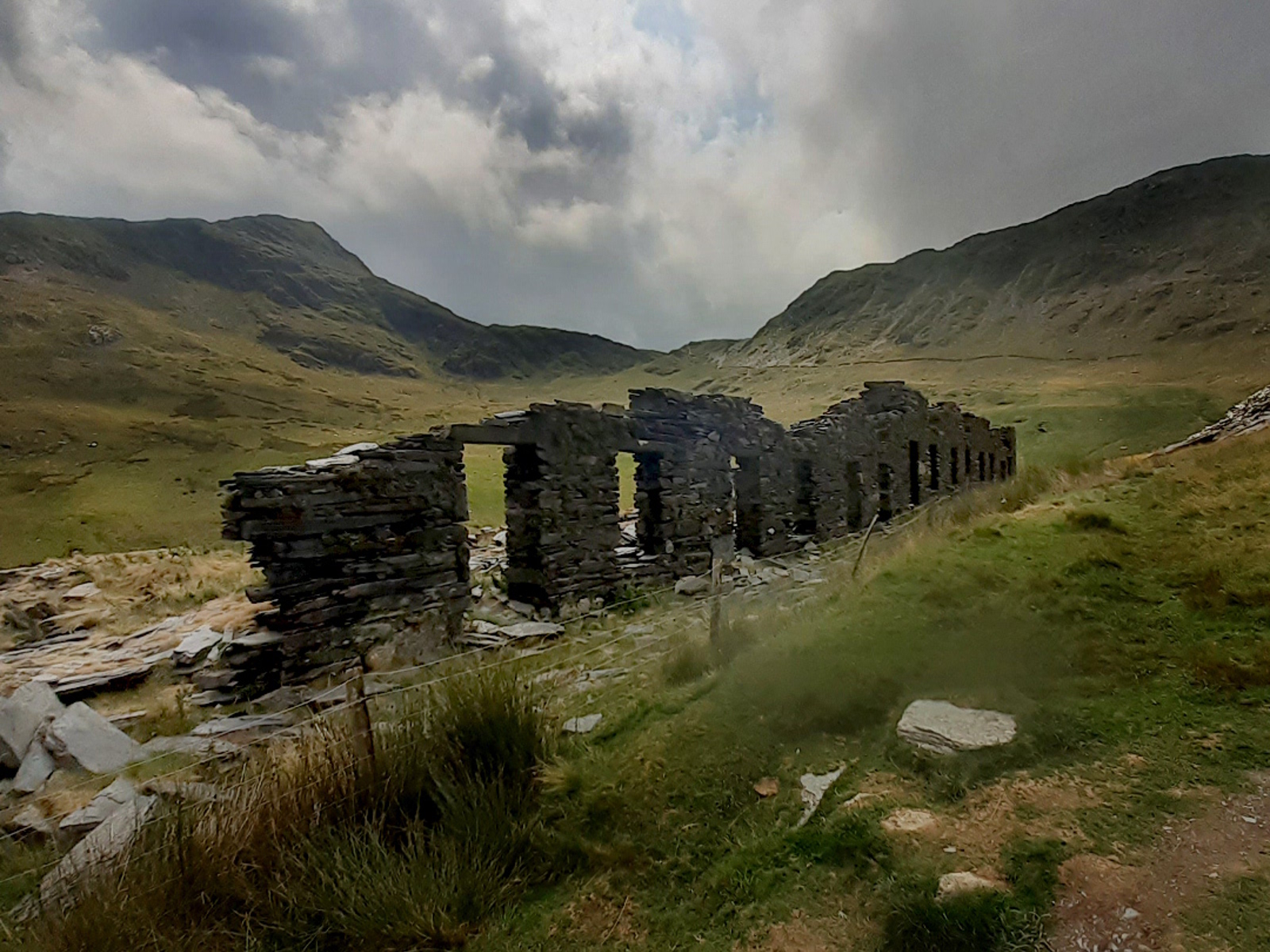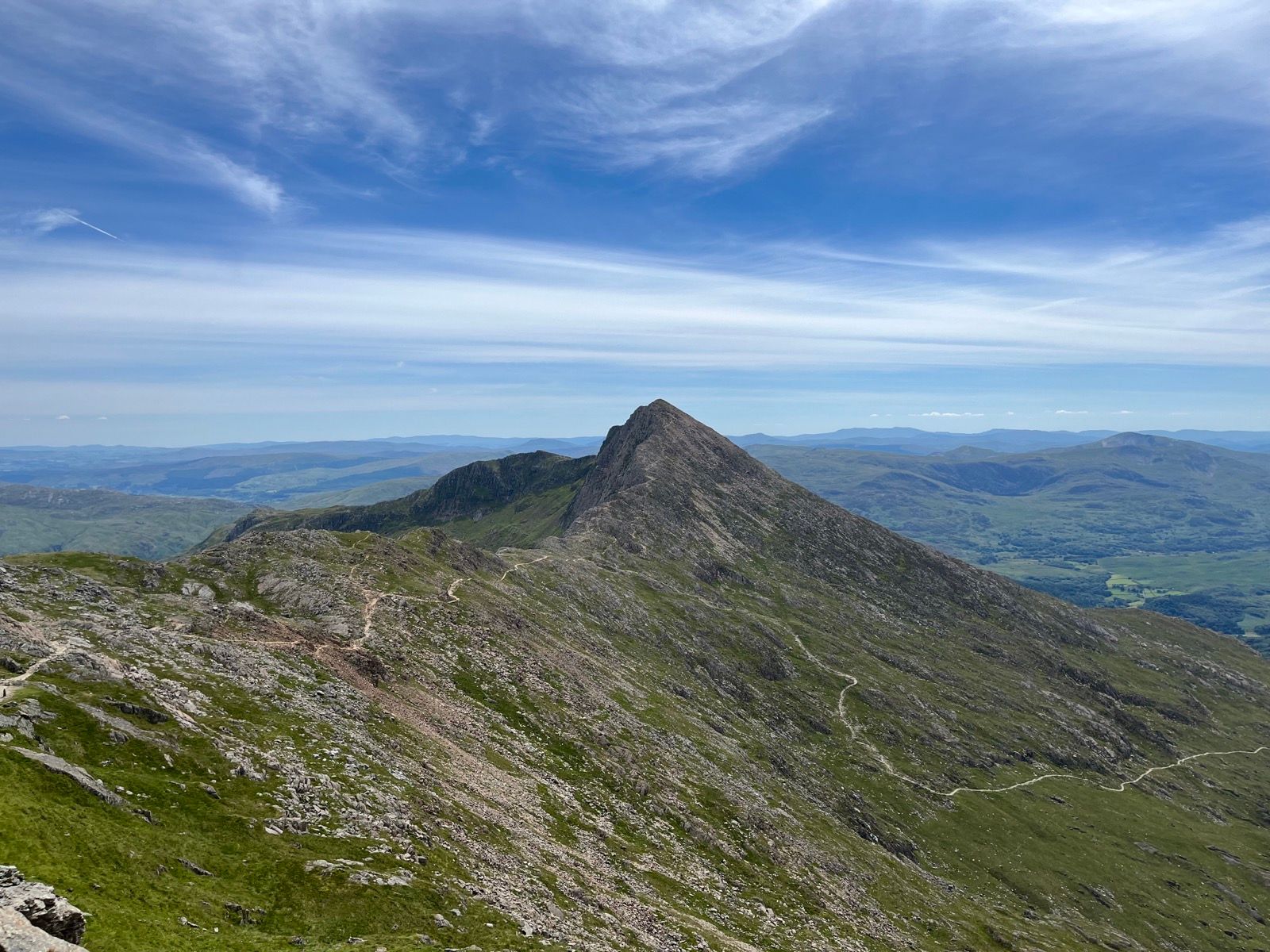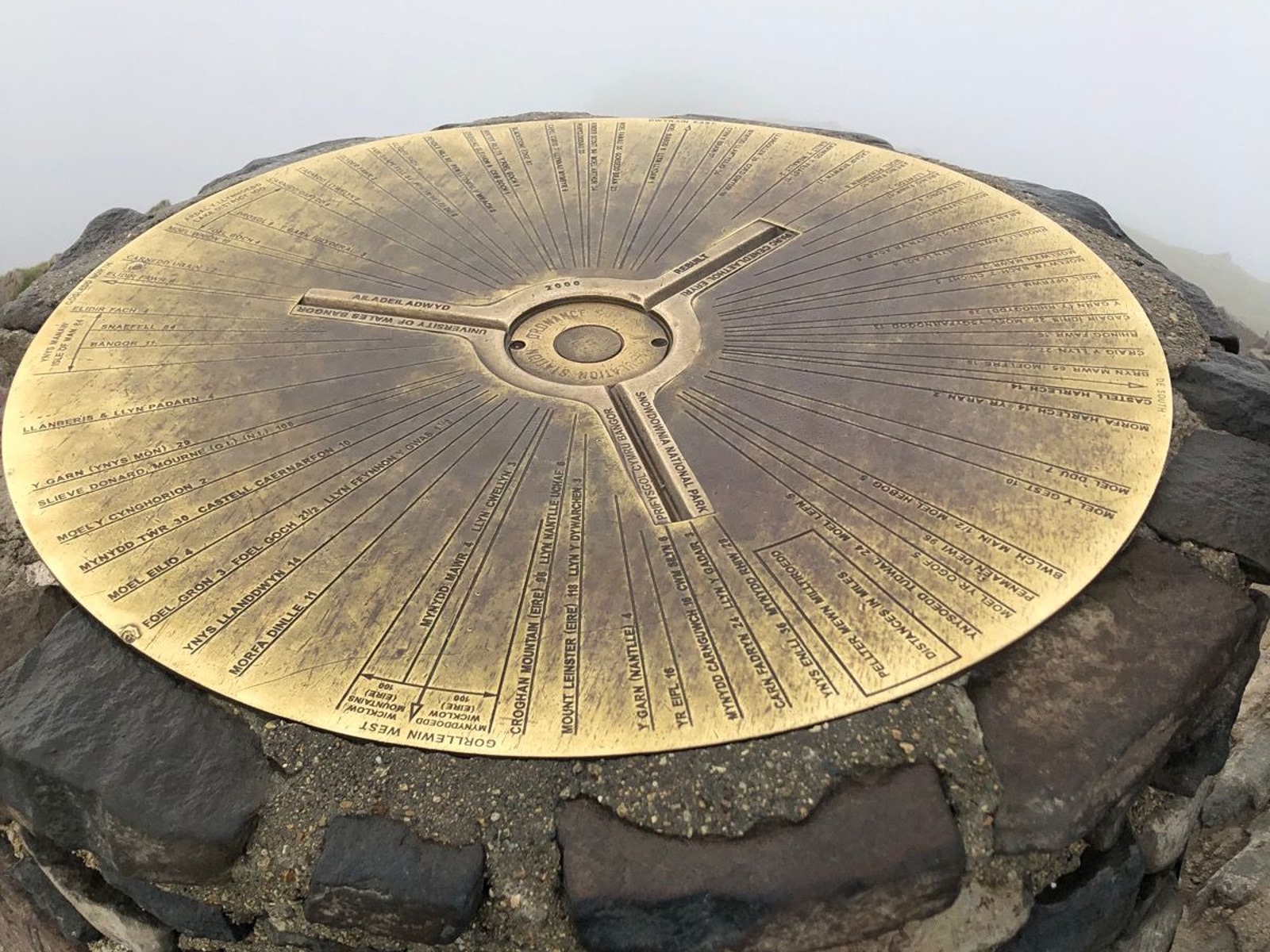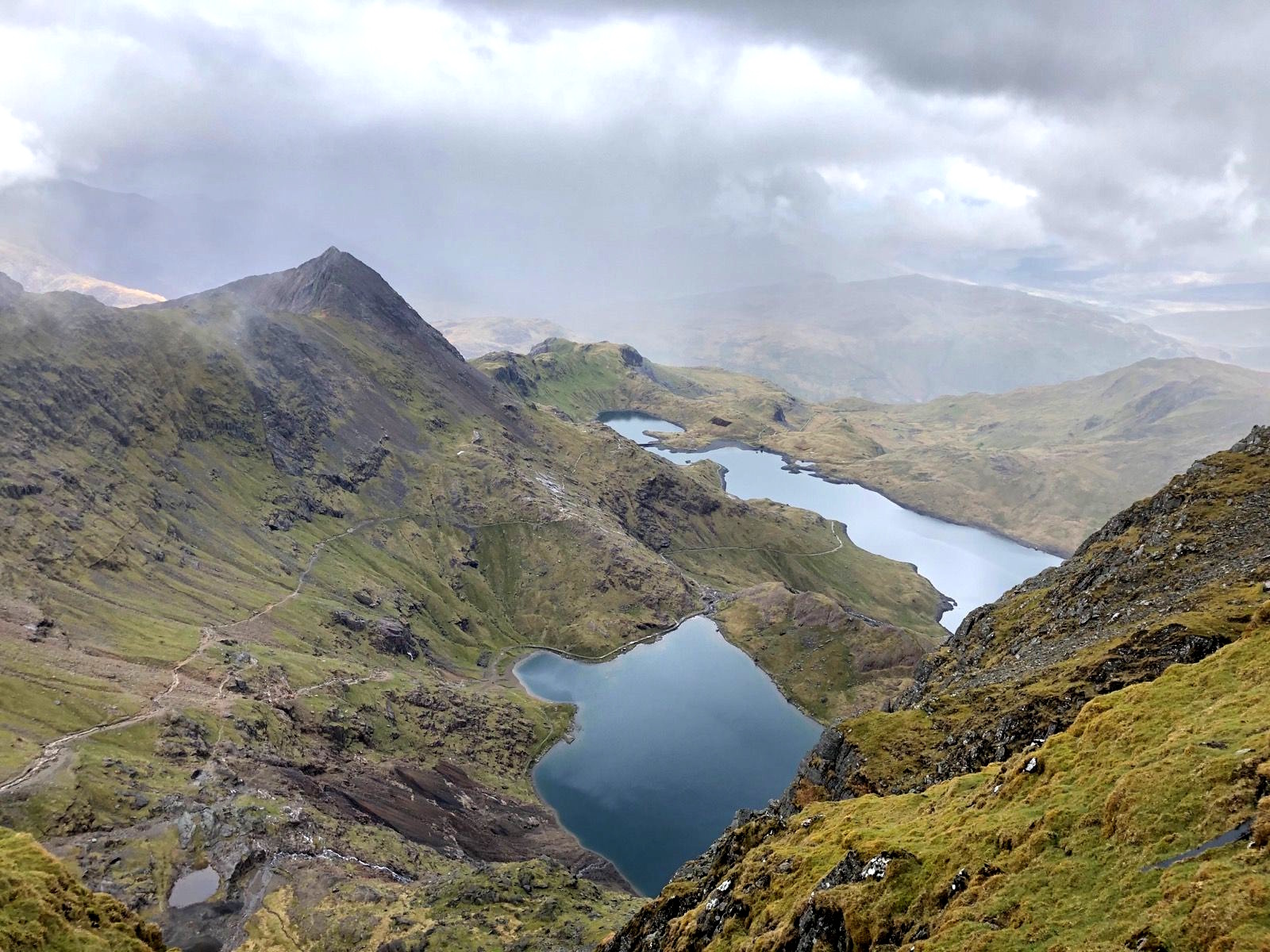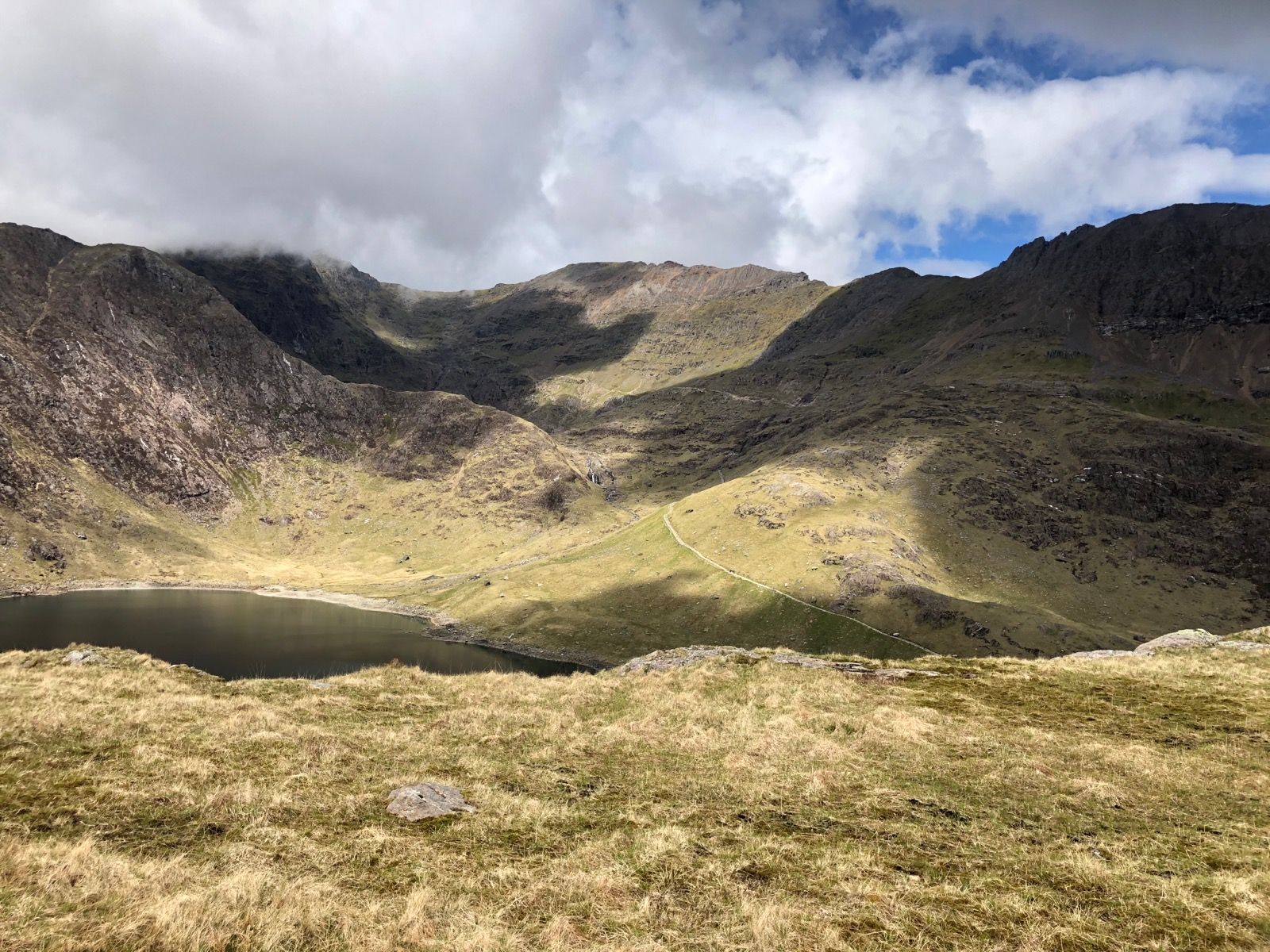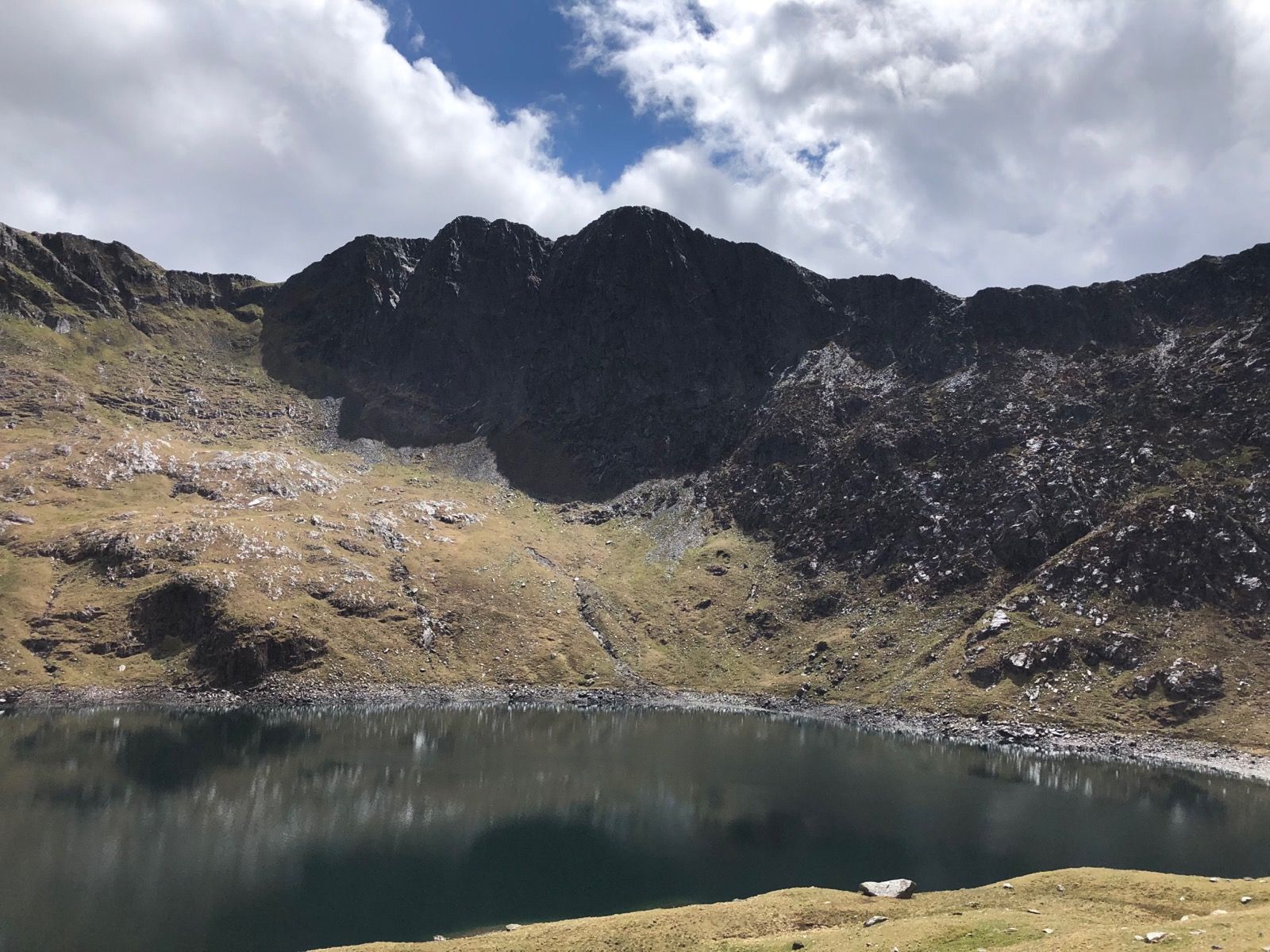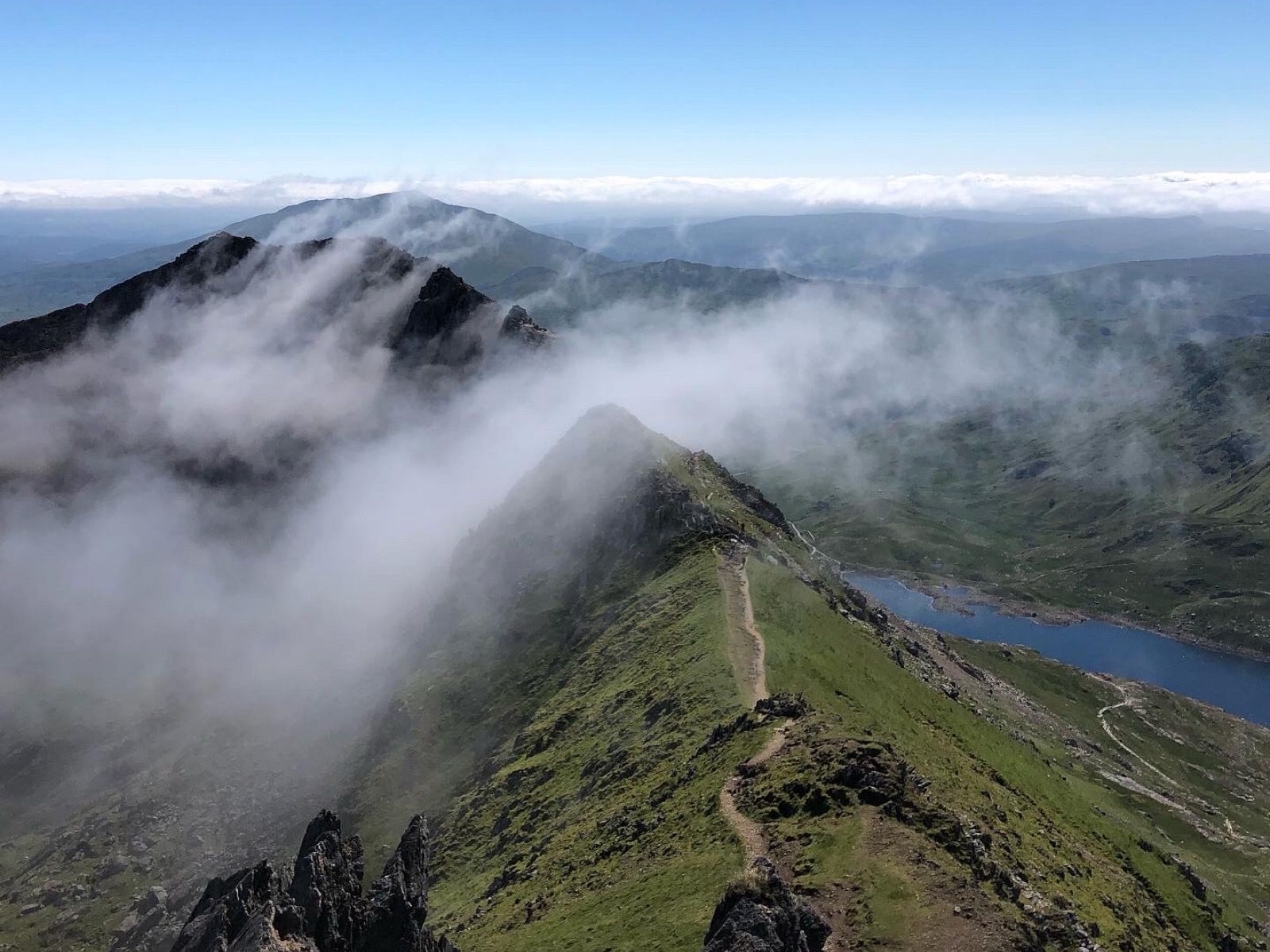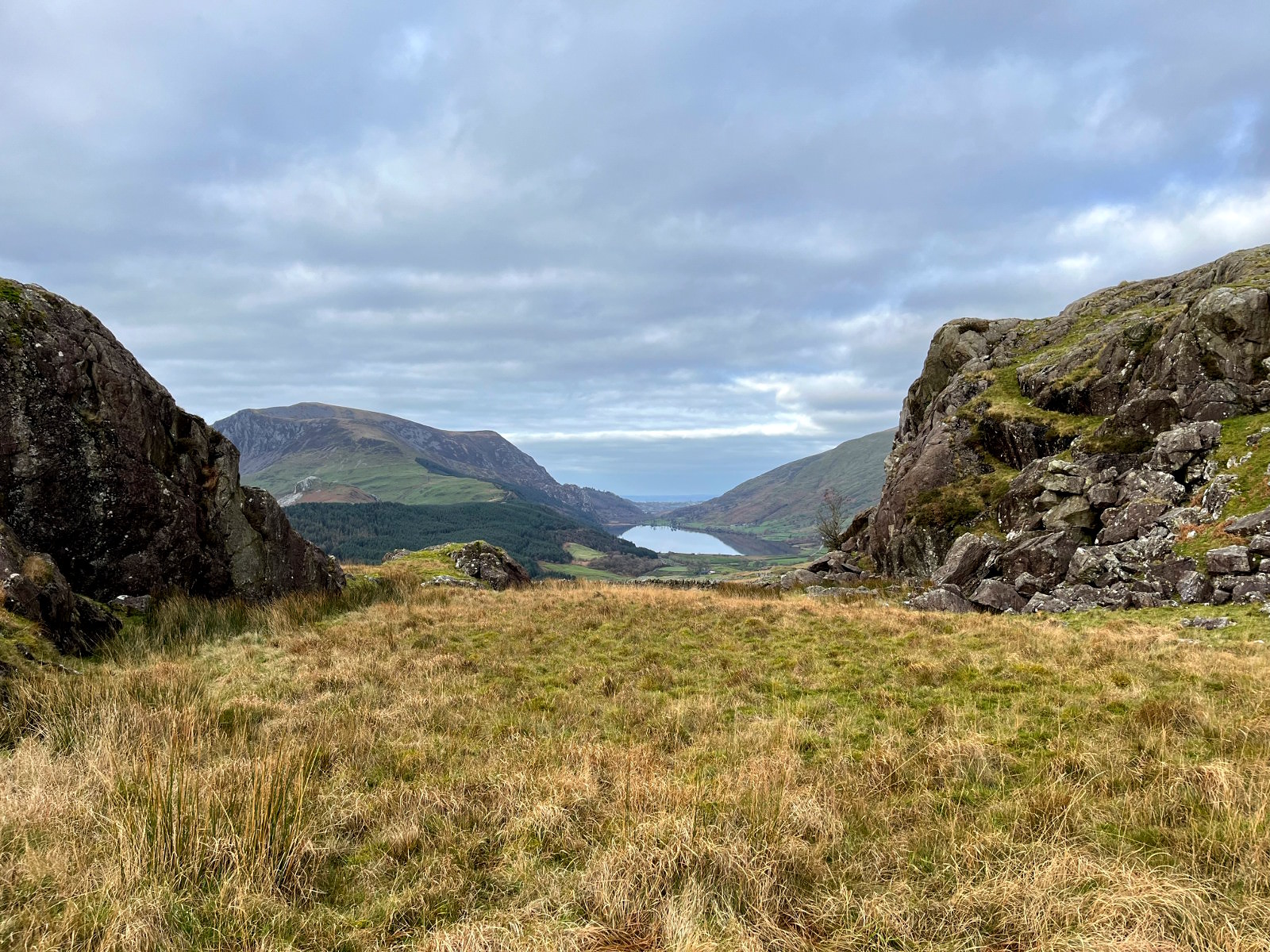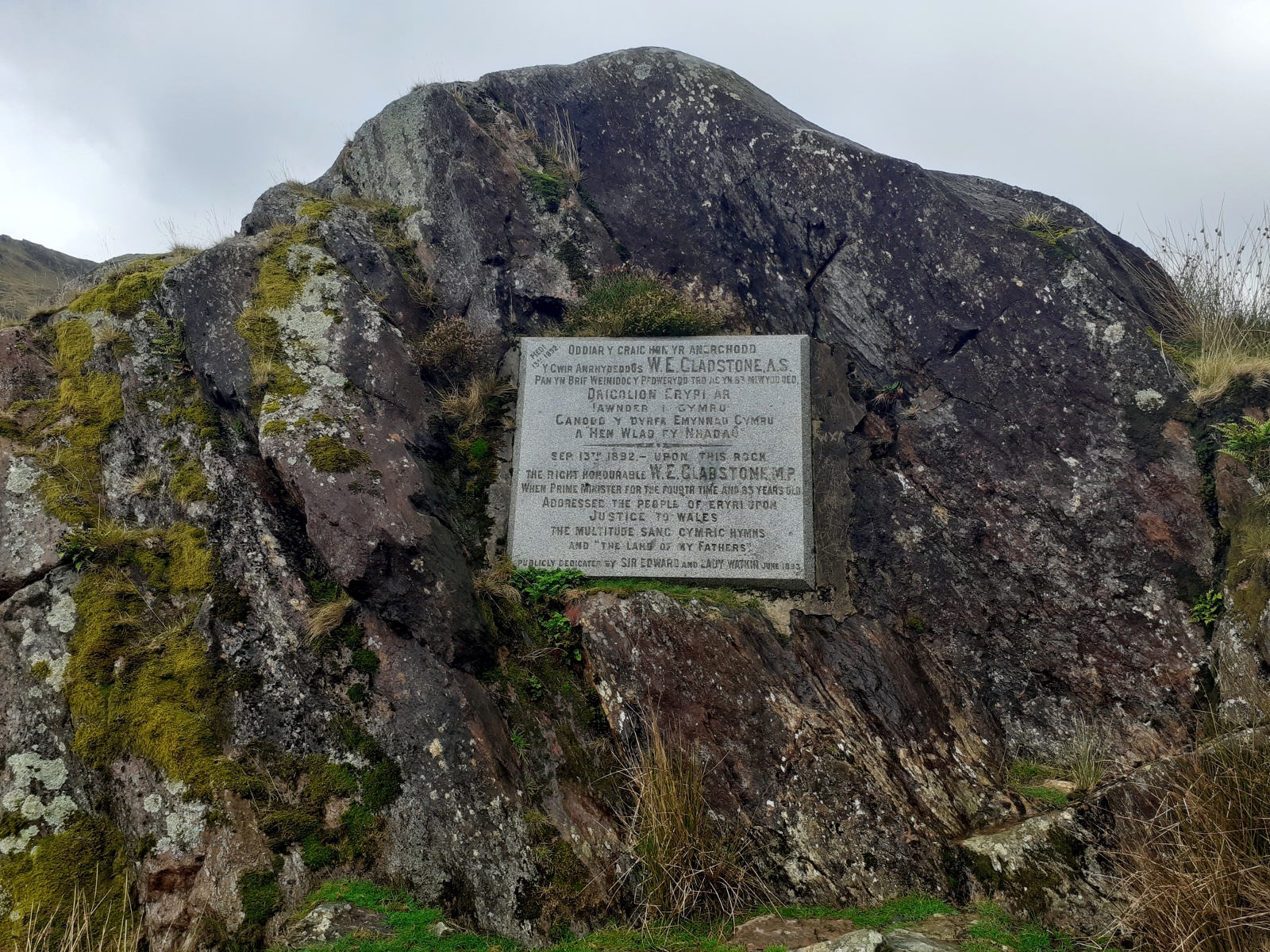Snowdon
... highest mountain in Wales!
Snowdon - 1,085 metres
Yr Wyddfa / Snowdon is:
- The highest mountain in Wales.
- The highest in the Great Britain south of the Scottish Highlands.
There are six main routes to the summit:
- Watkin path from Nantgwynant
- Miners' track from Pen-y-Pass
- PYG track from Pen-y-Pass
- Snowdon Ranger path from the Snowdon Ranger Youth Hostel
- Rhyd Ddu path from Rhyd Ddu
- Llanberis path from Llanberis (Easiest, but busiest route)
There are other variations, most notably:
These variations are not generally considered among the main routes to the summit as they first cross an interim summit.Be adventure smart on Snowdon
It is possible to join some of these routes together to make a circular route. For example the Snowdon Ranger and Rhy Ddu paths.
The paths starting from Pan-y-Pass can also be accessed directly from Nantgwynant by following the path to the west of Llyn Gwynant and up the valley to Pen-y-Pass (with the possibility of returning via the Watkin Path).
The lower slopes of the mountain contain the remains of old quaries and mines, and, near the Watkin Path which starts from Nantgwynant, the historic Gladstone Rock, from where William Gladstone spoke to the assembled gathering of worker. Also visible from the Watkin Path are the remains of The South Snowdon Slate Quarry. The slate quarry dates back to the 1840s, but the main period of development was between 1860 and 1870 and it was at this time that the tramway, that remains for which can still clearly be seen, was created. There are various old ruined quarry buildings on the site.
There are several lakes on the Snowdon including the largest, Llyn Lydaw, on the north east side of the mountain at 440 metres and Glaslyn at 600 metres which lies higher up Cwm Dyli than Llyn Llydaw and is the source of the river Glaslyn which flows down the Nantgwynant Valley.
The summit can also be reached using the Snowdon Mountain Railway from Llanberis. This rack railway opened in 1896 and covers just under five miles of track to the summit station.
Snowdon is designated a national nature reserve, it is home to rare flora and fauna, some of which is found no where else in the United Kingdom.
As well as sheep, goats also consider this mountain their home and can sometimes be seen on the lower slopes of the mountain. Much of snowdon was originally part of the Hafod y Llan Estate which has been a hill farm for at least 200 years. Hafod y Llan was bought by the National Trust in 1998.
Be weather wiseCheck the Met-Office mountain weather service / detailed forecast for Eryri / Snowdonia before setting out |
